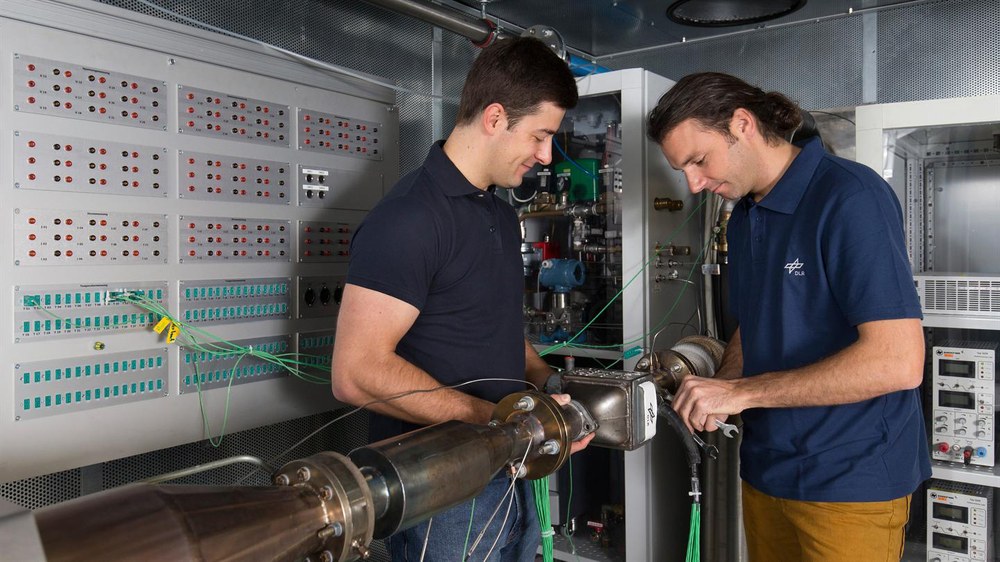The combustion engines used there only utilise around one third of the energy bound in the fuel for propulsion, with the remaining two thirds being lost as waste heat. As part of the RExTEG project, researchers from the German Aerospace Centre (DLR) and the Fraunhofer Institute for Physical Measurement Techniques (IPM) have investigated the potential of this technology for use in hybrid and range extender vehicles (REx) and developed a functional model for the first time.
The range of purely electric vehicles is currently still limited to around 200 kilometres for most vehicles due to the battery capacity. Hybrid and range extender vehicles are interim solutions: in addition to the electric motor, they have a combustion engine that switches on when the battery is exhausted, thus ensuring the far greater range of several hundred kilometres that consumers are accustomed to.
Higher efficiency, lower fuel consumption and fewer emissions
"Thermoelectric generators have great potential in hybrid vehicles. They make it possible to increase the overall efficiency of the drivetrain and allow hybrid vehicles to be driven more efficiently," summarises project manager Martin Kober, who supervised the project at the DLR Institute of Vehicle Concepts in Stuttgart. The electricity generated with the help of the TEG can be fed into the vehicle electrical system or the battery, for example. In this way, it helps to optimise the use of heat flows in the vehicle, thereby reducing fuel consumption and emissions. At the same time, it is possible to make other vehicle components, such as the alternator, smaller and therefore lighter.
Optimisation for the hybrid vehicle application
In order to exploit the potential of thermoelectric generators for use in hybrid vehicles, the researchers have designed and optimised the individual thermoelectric modules and the overall system for this specific application. Based on the TEG overall system optimisation, Fraunhofer IPM developed new types of thermoelectric modules that are specially adapted to the temperatures and heat flows in hybrid vehicles. They also investigated how the modules can be manufactured more cost-effectively. Until now, this has been done by hand, which is too time-consuming and expensive for the technology to be widely used in automotive engineering.
The DLR scientists constructed the thermoelectric generator and optimised its design. At the end of their work, a functional prototype weighing around eight kilograms was ready for use in a vehicle: it contains the thermoelectric modules, heat exchanger structures, coolant routing and electronics.
Test bench tests show very high power density
The developed functional model was then tested on the hot gas test bench at the DLR Institute of Vehicle Concepts in order to measure the properties of the component and compare these results with the simulations previously carried out. The test bench simulates the combustion engine in the vehicle: It sends an exhaust gas flow corresponding in mass and temperature through the TEG functional model and enables the current generated to be measured. Thanks to the special design and highly integrated construction, a very high power density was achieved at this stage of development - the highest in the world for a vehicle-compatible TEG.
The DLR scientists used an Opel Ampera as a reference vehicle for the development of the functional model. This hybrid vehicle, which is available on the market, can travel forty to eighty kilometres purely electrically and also has a combustion engine that serves as a range extender.
In order to be able to develop the TEG for the special application in hybrid vehicles in the first place, it was important for us to first familiarise ourselves with the operating strategies and operating states of an existing vehicle and to measure the temperature and mass flows
The automotive industry is also already interested in the potential of this technology. Following the completion of the RExTEG project, which was carried out over three years on behalf of the Baden-Württemberg Ministry of Finance and Economics with funding from the Baden-Württemberg Foundation, the next step for the scientists is to tackle the vehicle integration of the thermoelectric generator.

